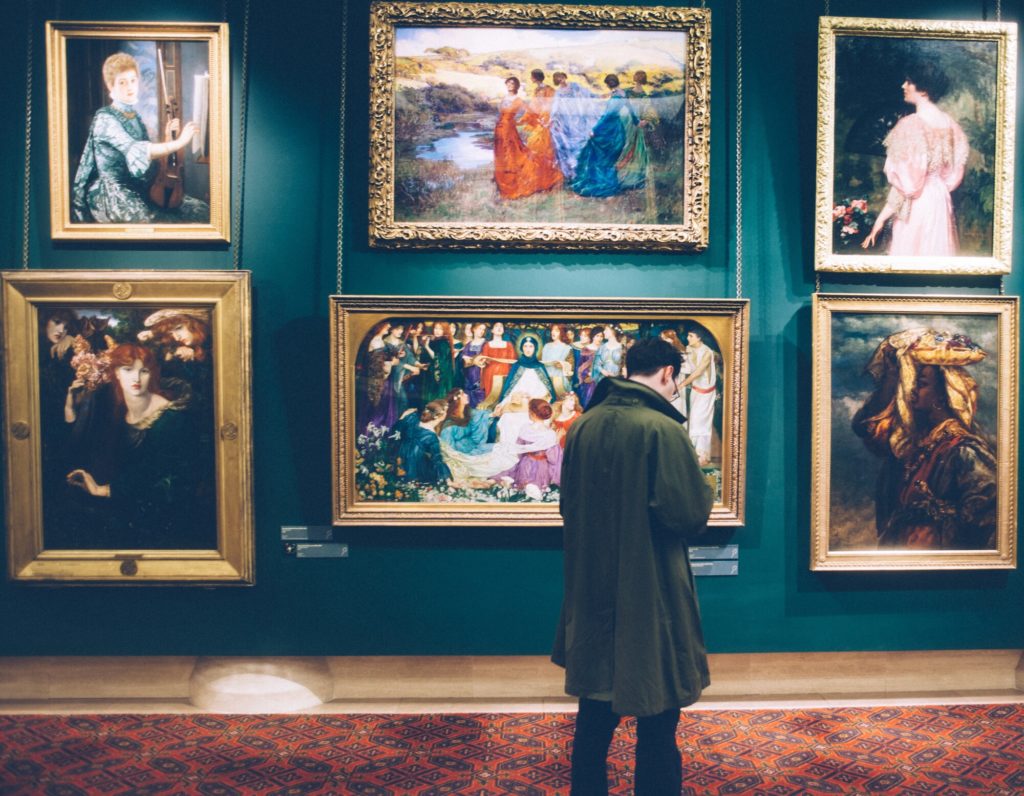
After years of painting on wood (think Mona Lisa), artists the world over began to accept canvas as the best medium for oil painting around 500 years ago.
Have you got a 16th-century old master gathering dust in your hall? You’re probably wondering how to clean a canvas painting. If it’s worth millions, we’d recommend leaving it to a professional.
But if your canvas painting is a bit more modern and a little less valuable, then there are things you can do at home to restore it to its former glory. Most of the time, all you’ll need is a couple of household standbys.
Let’s take a look at how to clean a canvas painting.
What Is a Canvas Painting?
A canvas painting is any painting that has been applied to a canvas backing. Canvas is a plain-woven fabric that is famous for being highly durable. That’s why canvas paintings that are 500 years old can still be in great condition.
In the past, it was made from hemp, but now it’s usually made from cotton or linen. Artists love the fact that it’s light, easy to transport, and relatively inexpensive. It is usually primed with gesso, which is a mixture of acrylic paint and a binder.
Most canvas paintings use oil or acrylic paint. They can be applied using brushes or palette knives. This guide will tell you everything you need to know about choosing the right brushes for the job.
How to Clean a Canvas Painting
Cleaning a canvas painting is not rocket science, but it’s going to take time and patience. The technique will also vary slightly depending on the type of painting you’re cleaning.
Cleaning an Acrylic Canvas Painting
The goal of cleaning an acrylic painting is to remove dust and any surface debris. If your painting is very dirty, this may not be enough and it may need professional restoration.
One of our best acrylic canvas painting cleaning tips is to be very careful with water. Water can shrink the canvas and it can wash away acrylic paint.
Grab yourself a can of compressed air, a soft bristle brush or lint-free cloth, and a very small amount of water in a bowl.
First, use the compressed air to gently blow dust away. Hold the tip of the nozzle a few inches above the painting and avoid touching it with your hand. Then, use the brush to lightly brush the surface of the painting.
Take a look – does it still need more work? If so, you’ve got a couple of options. Whichever you chose, be sure to do a patch test first.
The first option is to take the lint-free cloth and moisten it slightly with water. Then very lightly dab the surface of the paint to remove the dirt. Work through the whole painting systematically, being careful never to scrub it.
The second option is tried and true, but weird. Take a cotton swab and coat it with your saliva. Yes, you read that right.
The enzymes in saliva make it much gentler than water. Then gently roll the swab over the painting. You’ll need several cotton swabs to complete the whole thing.
Cleaning an Oil Painting on Canvas
Oil paintings are a little more finicky, and you’re going to need to go to an art store to buy a specialist cleaner.
You’ll need craft paper, a badger hair or sable brush, cotton swabs, and a bottle of emulsion cleaner. This last product is a specialist type of cleaner for oil paintings.
First, cut out some craft paper that’s larger than the painting and place it underneath it on a sturdy table.
Next, gently brush the whole painting. Apply very little pressure so that you do not scratch or damage it.
Finally, follow the instructions on the emulsion cleaner. They may tell you to use cotton swabs and to patch test a small area first. If that’s successful, work your way through the whole painting, replacing the swabs as needed.
Remember – never scrub the painting. Be super delicate, take your time, and change your swab as soon as it gets a little dirty.
Mistakes to Avoid When Cleaning a Canvas Painting
If you Google ‘how to clean a canvas painting’ you’ll see all kinds of, well, ‘interesting’ ideas. Some of them are downright dangerous for your painting!
The Potato Myth
One of the most common is to cut a potato in half and rub it all over the painting. Then wipe away the residue and voila, one cleaned canvas painting.
Firstly, please don’t do this. Because it will, we repeat, will leave a residue that will damage your painting. Even if you wipe it away immediately, you’ll still find residue that will stay behind.
Also, it’s very hard to clean a painting delicately when using something as clumsy as half a potato. Sure, it may fit snugly in the palm of your hand, but it’s hardly a finesse instrument. If you have impasto – an area of thick paint – you run the risk of knocking it clean off.
Pass the Baguette…
Another fun-sounding but potentially risky method is using dry bread. Some methods encourage you to take doughy bread, make sure it’s dry, and then use it as a cloth to wipe away dirt and grime.
Again, serious residue leaving risks going on here people. Sure, this will take away some dirt, but it’s also likely to do damage. Stick to the methods outline above and you’ll protect your valuables.
Aerosol Sprays
OK, we know nobody would ever bust out the Pledge and spray it all over a canvas painting. At least we hope they wouldn’t.
But you need to take care when you’re dusting near your canvas painting. Aerosol sprays have a tendency to spread out and land on surfaces you never intended. Take great care to keep them away from your precious canvases.
Bring Your Canvas Painting Back to Life
Now you know how to clean a canvas painting, you’ll be raring to clean your whole collection.
But remember to take your time. There are no shortcuts and you need a lot of patience. Use the right equipment, and if in doubt, talk to a professional.
For more great hints and tips on keeping your home and valuables spotless, head over to our Hacks section today!
